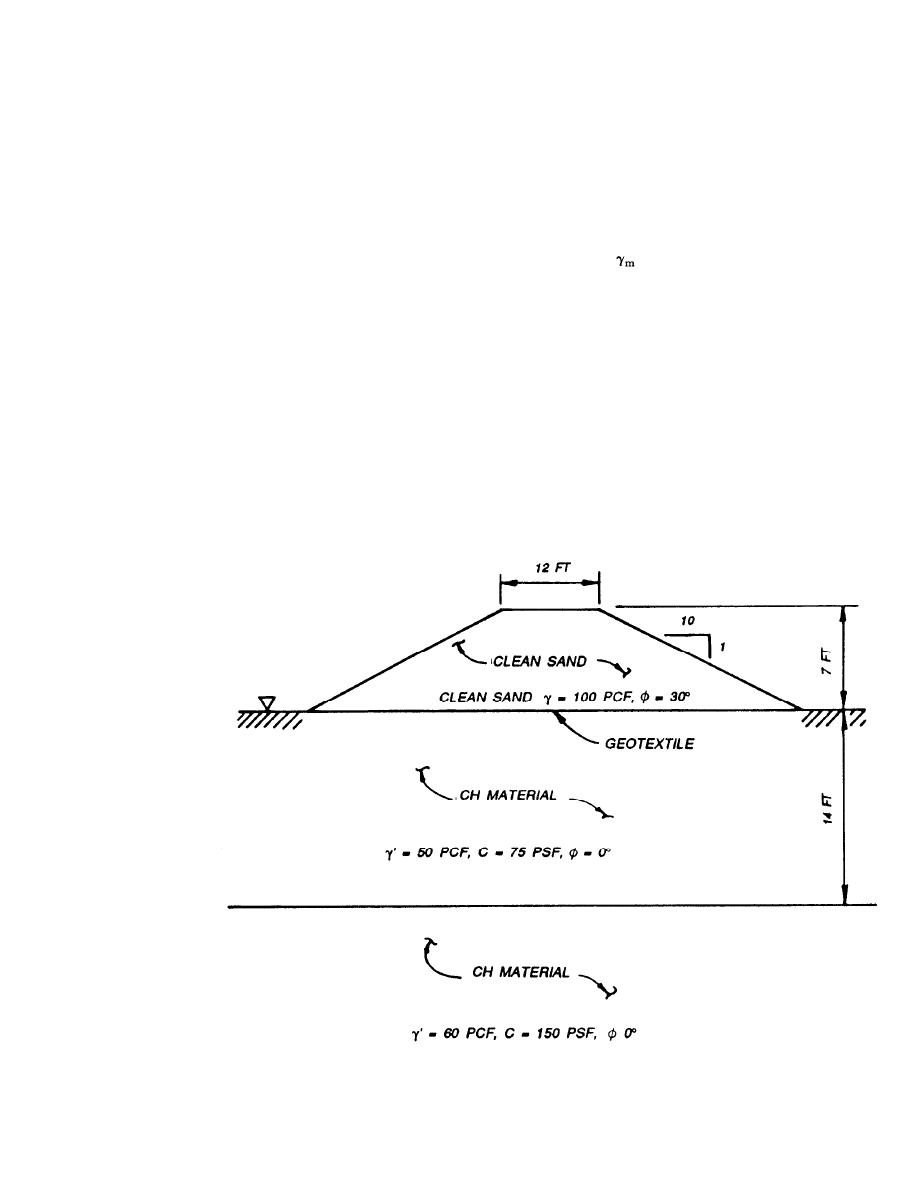
TM 5-818-8/AFJMAN 32-1030
from consolidation settlements, plastic creep, and
the subgrade modulus. The presence of a geotextile
flow of the soft foundation materials will be
increases the overall modulus of the reinforced
minimized. It is recommended that a conventional
embankment. Since the lateral movement is mini-
consolidation analysis be performed to determine
mized by the geotextile, the applied loads to the
foundation settlements.
soft foundation materials are similar to the ap-
plied loads in a laboratory consolidation test.
4-4. Example Geotextile-Reinforced Embank-
Therefore, for long-term consolidation settlements
ment Design
beneath geotextile-reinforced embankments, the
a. The Assumption.
compressibility characteristics of the foundation
(1) An embankment, fill material consisting of
soils should not be altered by the presence of the
= 100 pounds per cubic foot,
clean sand with
reinforcement. A slight reduction in total settle-
and φ = 30 degrees (where φ is the angle of
ment may occur for a reinforced embankment but
internal friction).
no significant improvement. Other studies indicate
(2) Foundation properties (unconsolidated, un-
that very high-strength, high-tensile modulus geo-
determined shear strength) as shown in figure 4-4
textiles can control foundation displacement dur-
(water table at surface).
ing construction, but the methods of analysis are
(3) Embankment dimensions (fig 4-4).
not as well established as those for stability
(a) Crest width of 12 feet.
analysis. Therefore, if the embankment is designed
(b) Embankment height (H) of 7 feet.
(c) Embankment slope, 10 Horizontal on 1
for stability as outlined previously, then the lat-
Vertical (i.e., x = 10).
eral and vertical movements caused by subsidence
NATURAL GROUND SURFACE COVERED
NOTE:
WITH GRASS AND VOID OF OTHER THAN
SMALL DEBRIS, HUMPS, DEPRESSIONS,
ETC. MAY OR MAY NOT HAVE A CRUST
Figure 4-4. Embankment Section and Foundation Conditions of Embankment Design Example Problem.
4-7


 Previous Page
Previous Page
